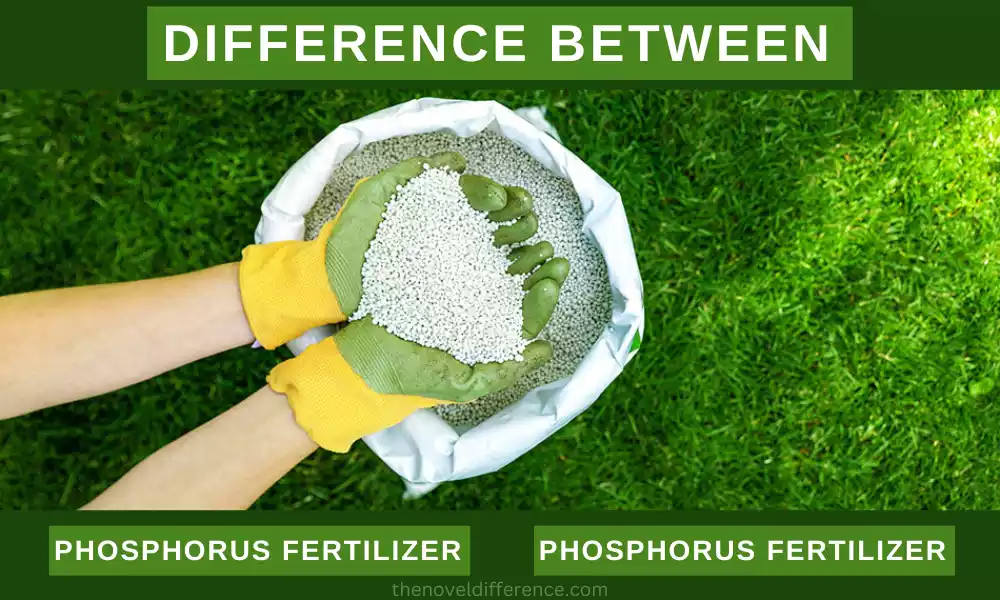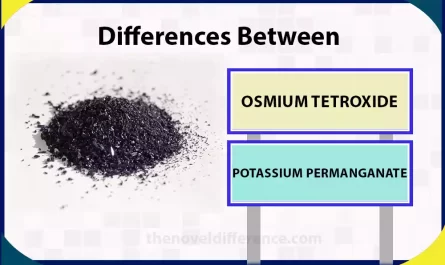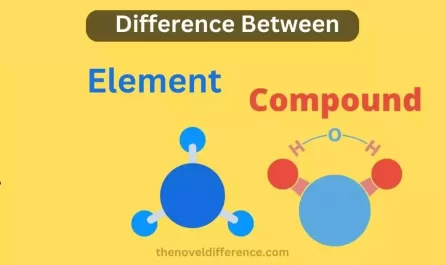Agriculture IS Nitrogen and Phosphorus Fertilizer are important
Fertilizers are important in agriculture:
- Nutrient enrichment: Fertilizers are essential for plants’ growth, development, and health. They provide them with nutrients such as nitrogen (N), potassium (K), and phosphorus. Fertilizers replenish these nutrients that may be lacking or inadequate in the soil to promote optimal plant growth.
- Higher Crop Yields: Fertilizers increase crop yields because they provide the nutrients plants need for their metabolic processes. A sufficient supply of nutrients ensures that the plants can produce more biomass, healthier roots, more flowers, or fruit, ultimately increasing their yield potential.
- Better Nutritional Quality: Fertilizers improve the nutritional value of crops. Fertilizers help plants synthesize vitamins, minerals, and proteins by supplying them with essential nutrients. This leads to an improved nutritional value in the harvested products. It is especially important to address nutrient deficiency in the human diet.
- Soil fertility maintenance: Constant crop cultivation depletes the soil over time of vital nutrients. Fertilizers replenish soil nutrients, preventing deficiencies and ensuring soil fertility over the long term. It helps to maintain agricultural productivity, and it promotes soil microorganisms’ health.
- Crop Health and Disease Resistance: A proper nutrient supply via fertilizers strengthens the immune system of plants, making them resistant to pests, diseases, and environmental stress. Well-nourished plants can better withstand adverse conditions such as frost, drought, or pest infestations.
- Efficient Resources Utilization: Fertilizers allow farmers to maximize resource usage, including land, water, and energy. Fertilizers help maximize the efficiency of plants’ nutrient absorption by providing them with essential nutrients. This reduces waste and minimizes the need to expand land.
- Economic Benefits: Fertilizers improve economic outcomes for farmers through increased crop productivity and quality. Increased yields lead to increased produce that can be sold, resulting in greater profitability and income. Fertilizers can also be used to improve crop management, which reduces production risks and ensures more consistent yields.
- Global Food Security: Due to the growing population of the world, fertilizers are essential to meet this demand. They bridge the gap between the limited availability of arable land and the demand for increased agricultural output. This helps to ensure global food security and reduces the risk of malnutrition and hunger.
As always, fertilizer use must be done responsibly and according to sustainable agricultural practices to minimize environmental impact, including runoff of nutrients and water pollution. Long-term sustainability necessitates striking a balance between benefits from fertilizers and environmental stewardship.
The role of nitrogen and phosphorus in plant growth
Plant growth and development is dependent on nitrogen, phosphorus, and other elements:
Nitrogen:
- Protein Synthesis: Nitrogen plays a major role in the amino acid building blocks. The production of enzymes, chlorophyll, cell division, and other plant processes are all dependent on proteins. Nitrogen is essential for the production of protein necessary for plant growth.
- Growth of the Leaf and Stem: Nitrogen encourages healthy growth, resulting in increased leaf and stem development. It promotes lush green leaves by stimulating the production of new, healthy cells.
- Photosynthesis: Nitrogen plays a crucial role in photosynthesis. This is the process through which plants convert solar energy into energy. It is an essential component of the pigment chlorophyll that captures light energy. Nitrogen is essential for efficient photosynthesis and increased plant productivity.
- Plant Vitality: Nitrogen has a positive impact on plant vitality. It increases root growth and nutrient absorption. It also improves the plant’s resistance to stressors like disease, pests, and drought.
The role of Phosphorus:
- Energy Storage and Transfer: Phosphorus is involved in the transfer and storage of energy within plants. It is a constituent of ATP, a molecule that stores and releases energy to support various metabolic processes in plants, such as photosynthesis, respiratory process, and cell division.
- Root Growth: The presence of phosphorus in the soil improves the ability of the plant to absorb nutrients and water. It is important to have adequate phosphorus available for the early establishment of roots and the overall growth of root systems.
- Fruit and Flower Production: The development of fruits, flowers, and seeds is dependent on phosphorus. It is essential for flowering and improving the quality of flowers, as well as increasing seed and fruit production.
- Enzyme activity and genetic expression: Phosphorus is involved in DNA synthesis, which contributes to plant development and genetic expression. It activates enzymes that are required for metabolic reactions in plants.
- Stress tolerance: The phosphorus in phosphate helps plants deal with environmental stressors such as droughts, cold temperatures, and nutritional imbalances. It increases the plant’s ability to adapt and cope with adverse conditions.
For optimal plant growth, it is important to balance the availability of nitrogen with phosphorus. The proper management of both nutrients is essential for healthy, productive plants. In some cases, nitrogen and phosphorus are applied in excess or unbalanced amounts. This can cause environmental problems such as runoff of nutrients and water pollution.
When applying nitrogen and Phosphorus fertilizers, it’s important to take into account soil testing, plant nutrition requirements, and sustainable farming practices.
What is nitrogen fertilizer?
The main nitrogen source for grains other than grain legumes is nitrogen fertilizer. This type of nitrogen fertilizer can be made from ammonia.
Haber-Bosch is the process we use to make this type of fertilizer:
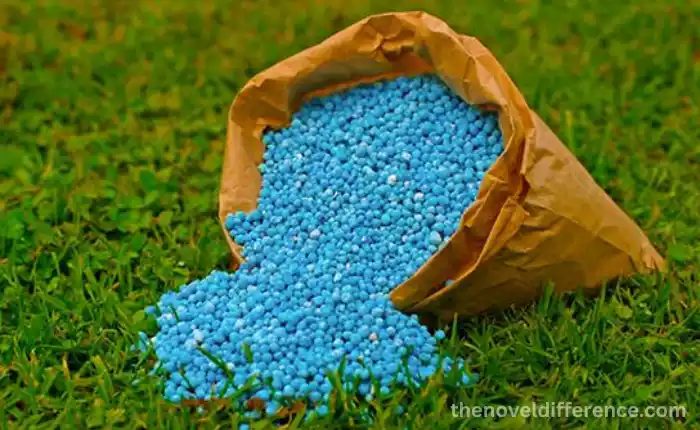
This is typically an energy-intensive method whereby natural gas is used to provide hydrogen, and nitrogen is obtained from the air. Ammonia can be used as a feedstock for nitrogen fertilizers such as anhydrous ammonium-nitrate or urea.
In the Atacama Desert in Chile, you can also find deposits of nitrate sodium (a nitrogen-rich fertilizer). This was the only nitrogen-rich fertilizer available in ancient times. These deposits are still being mined for fertilizer. We can also make nitrates by using the Ostwald Process.
What is phosphorus fertilizer?
The main phosphorous input to crops on agricultural fields is phosphate fertilizer. We can easily get phosphorous fertilizer by extracting phosphate rocks.
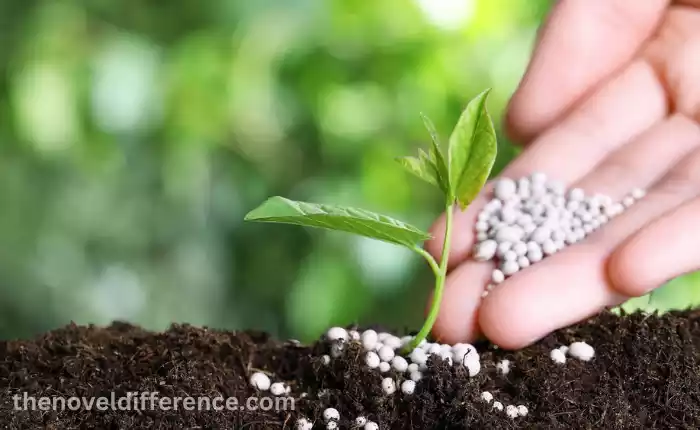
Fluorapatite and hydroxyapatite are the two main components of this rock that contain phosphorus. The two minerals can be converted into water-soluble salts of phosphate by treating the material with sulfuric or phosphoric acids.
The production of sulfuric acids is heavily influenced by the extraction of phosphorus fertilizers from phosphate rocks. The Odda or nitro-phosphate processes dissolve phosphate rocks containing up to 20% phosphorous in nitric acids to produce a mixture of calcium nitrate and phosphoric acid.
This mixture can be combined with potassium fertilizer to create a compound fertiliser that contains three macronutrients including N, P, and K in an easily soluble form.
The Differences between Nitrogen and Phosphorus Fertilizer
Differences between Nitrogen and Phosphorus Fertilizers:
- Nutrient composition: Nitrogen fertilizer is primarily nitrogen (N), while phosphorus fertilizer provides phosphorus. Nitrogen is essential for leafy growth, protein synthesis, and flowering. Phosphorus supports root development, fruit production, and flowering.
- Mobility and Availability: Nitrogen can be easily leached away from the soil, which makes it more susceptible to runoff and leaching. Phosphorus is less mobile in soil, and it tends to stay near the point of application.
- Forms & Application Methods: Nitrogen fertilizers are available in a variety of forms, such as ammonium-nitrate (ANP), urea, or ammonium-sulfate. They can be applied either as liquids or gases. Phosphorus fertilizers are commonly available in the form of phosphates such as diammonium (DAP) and triple superphosphates (TSP). They are usually applied as granules.
- Nitrogen Effects on Plant Growth: Nitrogen enhances plant health by encouraging leaves and stem growth as well as photosynthesis, while Phosphorus provides crucial root development, fruiting, and seed production. Both nutrients play an integral art in keeping a plant alive and well – but their individual effects on different aspects of growth differ.
- Impact on the Environment: Excessive application of nitrogen can cause environmental problems, including water pollution from runoff and leaching. It can also contribute to harmful algal blooms. Water pollution can be caused by phosphorus runoff, especially when there is an excess of phosphorus in the soil. It is important to manage and apply both nutrients properly to minimize the environmental impact.
- Soil interactions: Nitrogen undergoes microbial transformations, including conversion to nitrate (by nitrifying bacteria). Phosphorus may bind to soil particles, making it less available to plants. This is especially true in soils that have high pH levels or high iron or calcium concentrations. The soil properties and conditions affect the availability and efficacy of nitrogen and phosphorus fertilizers.
- Crop suitability: Different plants have different nutrient needs, and the selection of nitrogen and/or phosphorus fertilizers is based on the needs of each plant. Some crops like leafy vegetables may need higher nitrogen fertilization to ensure robust growth. Others, like fruiting plants, may benefit from increased phosphorus to improve flower and fruit development.
Before applying nitrogen or phosphorus fertilizers it is important to take into account these differences and to conduct soil tests to determine the specific nutrient requirements of the crop and the soil conditions. Nutrient management is essential to ensuring effective fertilization and minimizing environmental impact.
The Right Fertilizer
To maximize nutrient delivery with minimal environmental impact, it’s essential that when selecting fertilizers you consider several factors when making your selection.
Consider these key considerations:
- Nutrient Analysis and Soil Testing: Conduct soil tests to evaluate its pH level and nutrient composition. You may identify specific deficiencies or imbalances of nutrients in your soil that require amendment with fertilizers; additionally, analysis of plant tissue can offer valuable information about its nutrition needs.
- Crop requirements: Understand what nutrients are required for the crop that you are growing. Nitrogen, phosphorus, and potassium are essential nutrients that differ between crops. Choose a fertilizer based on the growth stage of your crop, its yield goal, and any specific nutrient requirements.
- Balanced Fertilization: Aim to achieve balanced fertilization by taking into account the nutrient requirements of the crop as well as the current nutrient levels within the soil. Avoid excessive application of a single nutrient as this may lead to nutrient balances, pollution, and inefficient resource use.
- Fertilizer Formulations: Select fertilizer formulations according to the soil and crop conditions, selecting between different types like granular, slow-release, and liquid forms of fertilizers. It’s important to consider both their benefits and limitations for your intended application method before making your selections.
- Nutrient Rates: Certain crops may need specific nutrient levels for growth and productivity. Leafy greens, for example, benefit from higher levels of nitrogen, while fruiting plants may need a balanced ratio between nitrogen and phosphorus to develop better flowers and fruits. Consult crop-specific recommendations for nutrients or ask agricultural experts for advice.
- Environmental Impact: Take into account the environmental impact that the selected fertilizer may have. Select fertilizers that have a controlled or slow release to minimize nutrient runoff and leaching. Follow best management practices such as the right timing and application rate to reduce the risk of nutrient contamination.
- Cost-effectiveness: Evaluate different fertilizer options in terms of cost-effectiveness. When comparing prices, consider factors like nutrient content and application rates. Also, think about the long-term effects. Sometimes, higher-quality fertilizers with better nutrient availability can result in improved yields as well as overall cost savings.
- Sustainable Farming Practices: When selecting fertilizers, emphasize sustainable farming practices. When possible, choose organic or natural fertilizers. Consider using other nutrient-rich sources like compost or cover crops as a supplement to synthetic fertilizers or to reduce their use.
Regularly monitoring and assessing the effects of fertilization on crop growth and soil nutrients is essential. It may be necessary to adjust the fertilizer program based on changes in soil conditions or plant responses.
Consult local agricultural extension or agronomists for valuable advice on choosing the best fertilizer to use in specific conditions and crops.
The conclusion of the article
Fertilizers are essential to modern agriculture. They provide nutrients that increase crop yields and improve nutrition quality. Both nitrogen and phosphorus play important roles in plant development.
Nitrogen is necessary for photosynthesis, leaf and stem growth, and protein synthesis. It helps to promote lush foliage, improves plant health, and increases overall plant strength.
The plant needs phosphorus for the development of roots, flowering, and fruit production as well as energy transfer. It promotes robust root systems and improves the quality of seeds and fruits.
Understanding the differences between nitrogen fertilizers and phosphorus fertilizers is essential to managing nutrients effectively. Nitrogen fertilizers are primarily nitrogen fertilizers, whereas phosphorus fertilizers provide phosphorus. Nitrogen is mobile whereas phosphorus does not. Both nutrients are applied in different ways and have different forms.

